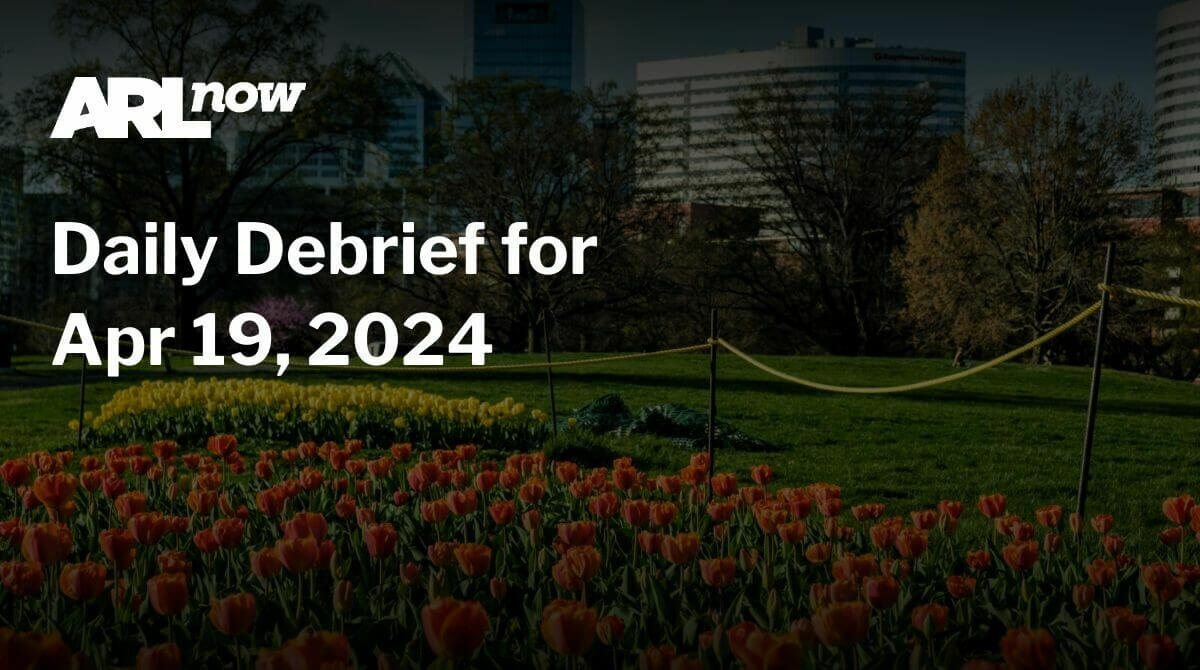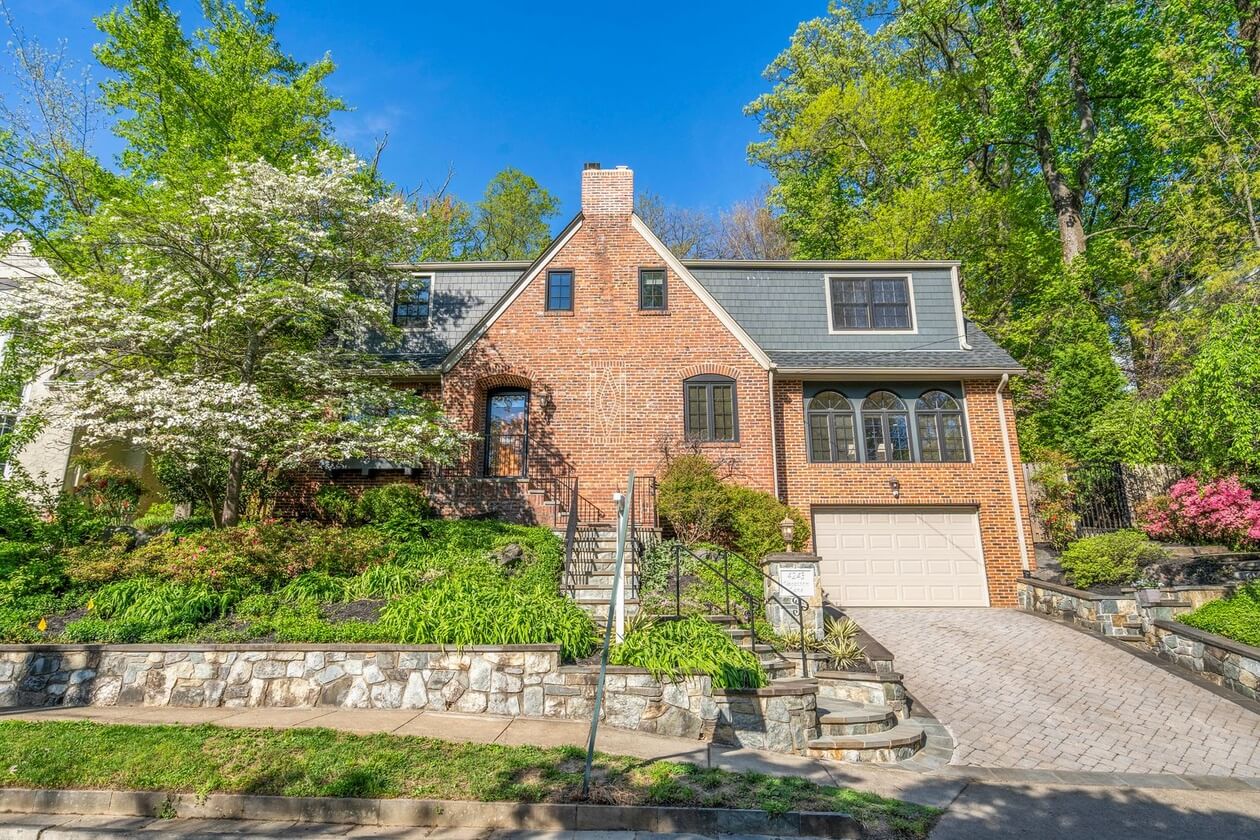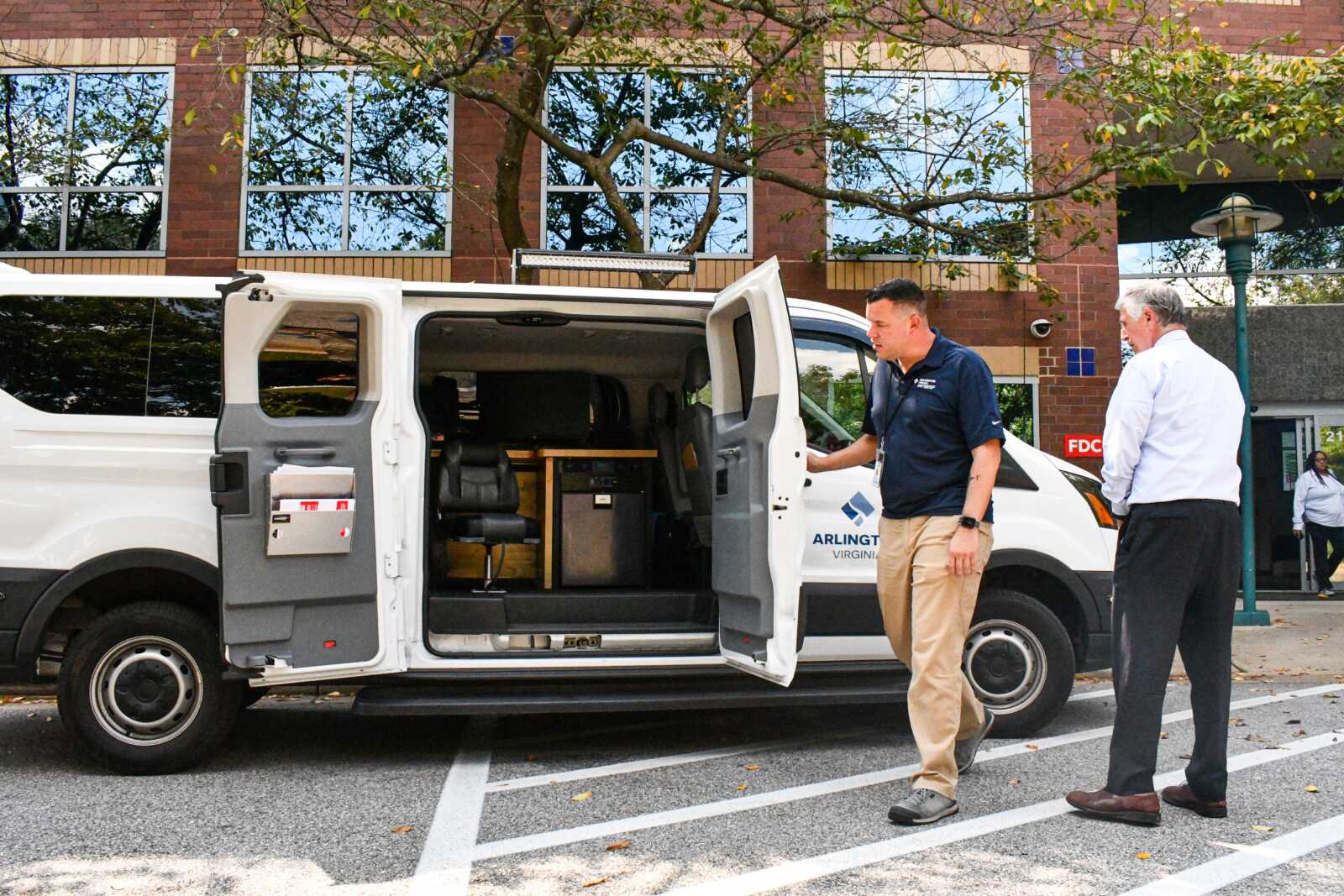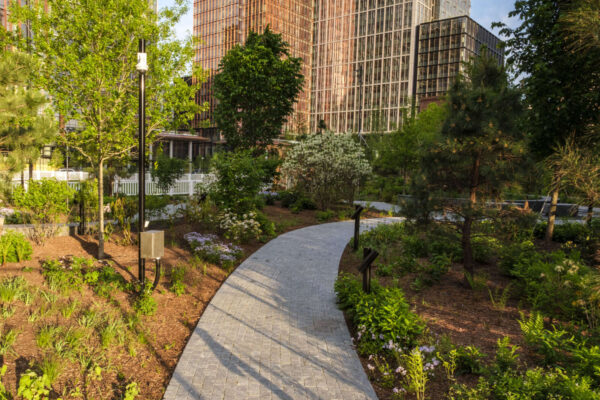
After reaching No. 3 among local park systems last year, Arlington County has fallen a couple of spaces in the national “ParkScore” rankings.
The county was ranked No. 3 in the U.S. on the Trust for Public Land’s ParkScore index in 2022, after several years of being stuck at No. 4. This year, the county is No. 5.
A PR rep for the Trust for Public Land said the change was less about Arlington and more about two other park systems.
“It’s mostly because Irvine and Minneapolis opened new parks that pushed them ahead — not because of problems in Arlington,” said Matthew Kagan.
D.C. repeated as No. 1 in the nation this year. St. Paul, Minnesota is No. 2.
Last year, after ranking in the top 3, the county touted that 99% of Arlington residents live within a 10-minute walk to the park.
“Our parks and recreation opportunities are a key contributor to quality of life in Arlington County,” Arlington County Board Chair Katie Cristol said in 2022. “From livability, bikeability, fitness, health and more, our community benefits from our parks.”
Arlington got lower marks, however, for overall and median park acreage.
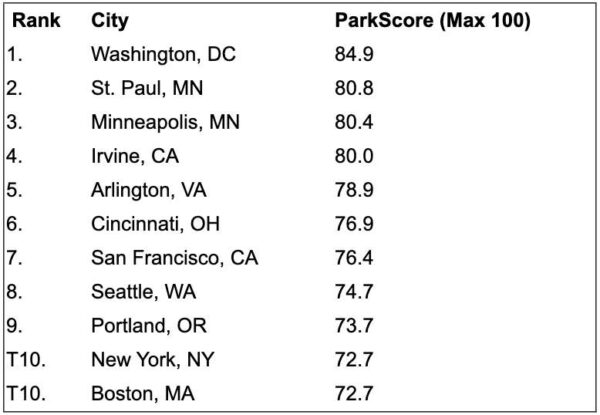
The full press release about this year’s rankings is below.
Trust for Public Land announced today that Washington, DC, was rated the nation’s best big-city park system by the 2023 ParkScore® index. Saint Paul, Minnesota, placed second, Minneapolis climbed to third, Irvine, California, surged to fourth, and Arlington, VA placed fifth. The ParkScore index evaluates park systems in the 100 largest U.S. cities.
2023 is the third consecutive year that Washington earned the ParkScore crown and Arlington finished among the top five.
Both cities ranked highly on all ParkScore index rating factors. Ninety-nine percent of Washington and Arlington residents live within a 10-minute walk of a park, far exceeding the national ParkScore average of 76 percent. Both cities also outperform on park investment. Washington spends $259 per resident on parks and Arlington invests $346. Both cities more than double the national ParkScore city average of $108.
Washington also outperformed on ParkScore’s park equity metrics. Residents of the District who identify as Black, Latino, Indigenous and Native American, or Asian Americans and Pacific Islanders are equally likely to live within a 10-minute-walk of a park as are residents of neighborhoods where a majority of the population identifies as white. Park space per capita is also distributed nearly equally in Washington.
By contrast, among all ParkScore cities, neighborhoods where most residents identify as people of color have access to an average of 43 percent less park space than predominately white neighborhoods. Residents in low-income neighborhoods have access to 42 percent less park space than residents in high-income neighborhoods.
“We know how much our public parks and community spaces mean to all Washingtonians. Our teams work tirelessly year-round to keep our parks and facilities beautiful, open, and filled with events and programs that engage residents of all ages,” said Mayor Muriel Bowser. “DC has a little something for everyone, including a recreation center within a mile of every household. Our #1 ranked park system is just another reason why we’re grateful to call DC home, and we encourage all Americans to visit and experience our parks too.”
Accompanying the annual ratings list, Trust for Public Land published new research reporting that cities with high ParkScore rankings are healthier places to live, with residents experiencing better mental health and higher levels of physical activity. This correlation, based on PLACES data collected by the Centers for Disease Control and Prevention, holds true even after controlling for race/ethnicity, income, age, and population density.
The new research, The Power of Parks to Promote Health, also reported an increasing focus on community health solutions at park departments nationwide, with surging interest in mental health and wellness. The research is based on nearly 800 examples of health-focused activities shared with Trust for Public Land researchers, including innovative partnerships with health care providers, such as writing “prescriptions” for spending time in nature and funding fitness classes at parks and community centers.
Both Washington and Arlington are among the national leaders working to promote community health at local parks. Both cities offer free “drop in” fitness classes targeting seniors, and Washington has partnered with MedStar to offer free adaptive summer camp for local youth with disabilities.
“Health professionals have long understood that physical play and exercise is essential for childhood development, but we’re just starting to grasp the mental health benefits. Simply being in a quiet natural place promotes stress reduction and attention restoration, and evidence suggests that local green space serves as a gathering point that fosters community cohesion, allowing for people to know their neighbors and form social bonds that promote health and safety,” says Dr. Georges C. Benjamin, executive director of the American Public Health Association.
Most cities included in the ParkScore index have launched programs welcoming fitness beginners and other residents who might feel uncomfortable in traditional sports-oriented fitness programs. For example, 39 park systems report offering wellness-oriented classes, such as yoga or dance, and 12 have redesigned parks to support non-competitive physical activity. Design changes include the installation of walking loops, inclusive play equipment for visitors with disabilities, and community garden plots.
“Innovation is the key to future success. Today, parks departments across the country are writing a new playbook to ensure that all residents can enjoy the physical and mental health benefits of their neighborhood park. As an organization dedicated to connecting everyone to the outdoors, Trust for Public Land is excited by what we’ve seen this year and will continue working with city leaders throughout the United States to support park access for all,” says Diane Regas, President and CEO of Trust for Public Land.
Irvine climbed significantly in the ParkScore rankings, rising from eighth position last year to fourth in 2023. Irvine’s rise was driven by significant increases in publicly accessible park space. The city now offers 94 percent of residents access to a park or open green space within a 10-minute walk of their home. Last year, 89 percent of Irvine residents enjoyed 10-minute access. San Francisco (seventh place) and Boston (tenth) remain the only ParkScore cities to provide 10-minute walk access to 100 percent of local residents. The national ParkScore park access average is 76 percent.
Other major ParkScore movers this year include Boise, Idaho (+15 to twenty-second), North Las Vegas, Nevada (+17 to thirty-seventh) and Memphis, Tennessee (+14 to seventy-ninth).
Boise defended its title as the best park system for dogs, with a nation-leading 7.5 dog parks per 100,000 residents, outscoring Portland, Oregon, and Norfolk, Virginia. St. Paul received top marks for basketball hoops, Las Vegas scored best for playgrounds, and Boston earned top marks for splashpads and other water features.
PARKSCORE METHODOLOGY AND RANKINGS
The annual ParkScore® index ranks park systems in the 100 most populous U.S. cities and is widely considered the gold standard for park evaluation. ParkScore rankings are based equally on five factors:
- Park access measures the percentage of residents living within a 10-minute walk of a park.
- Park equity compares per capita park space and 10-minute-walk park access in communities of color vs. white communities and in low-income neighborhoods versus high-income neighborhoods. Park systems score higher if disparities are minimal or non-existent.
- Park acreage is based on a city’s median park size and the percentage of city area dedicated to parks.
- Park investment measures park spending per resident.
- Park amenities assesses the availability of six popular park features: basketball hoops, off-leash dog parks, playgrounds, splashpads and other water-play structures, recreation and senior centers, and restrooms.
Recent Stories
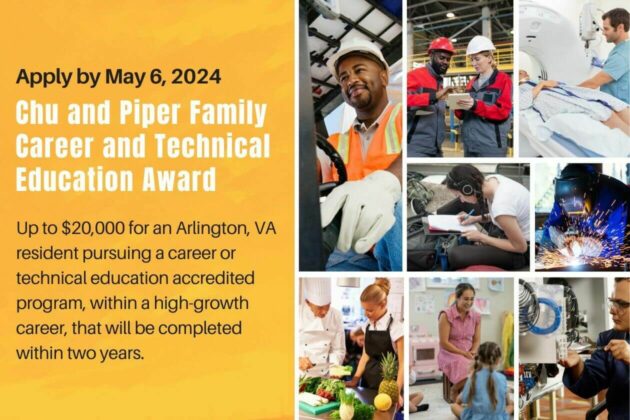
The Award is available to recent high school graduates and non-traditional students (see the application for more details). Each recipient may be awarded up to $20,000. Applicants are required to submit an online application form as well as a short video application.
The applicant must be an Arlington resident pursuing a career or technical education accredited program, within a high-growth career, that will be completed within two years.
The careers and programs include, but are not limited to:
-
Audio, Video, and Sound Engineering Technicians
-
Broadcast Technicians
-
Commercial Drivers
-
Culinary Arts
-
Early Childcare Education
-
Healthcare
-
Information Technology and Computer Science
-
Manufacturing and Skilled Trades (including welding, auto and aviation mechanics and technicians)
-
Public Safety

Unlike our competitors, Well-Paid Maids doesn’t clean your home with harsh chemicals. Instead, we handpick cleaning products rated “safest” by the Environmental Working Group, the leading rating organization regarding product safety.
The reason is threefold.
First, using safe cleaning products ensures toxic chemicals won’t leak into waterways or harm wildlife if disposed of improperly.
Second, it’s better for you and your family. Fragrant chemicals in surface cleaners can expose you to a similar amount of pollutant particles as a busy city road, New Scientist reported.
ACFCU’s Free Homebuying 101 Webinar: Steps to Getting Pre-Approved
Are you ready to jump into homeownership, or have you started considering it but don’t know where to start?
Financial preparation is key when thinking about purchasing your first home and the first step to getting pre-approved. Join ACFCU for
Sweeney Todd
A victim of a gross injustice that robbed him of his wife and child, Sweeney Todd sets about exacting a terrible revenge on society.


